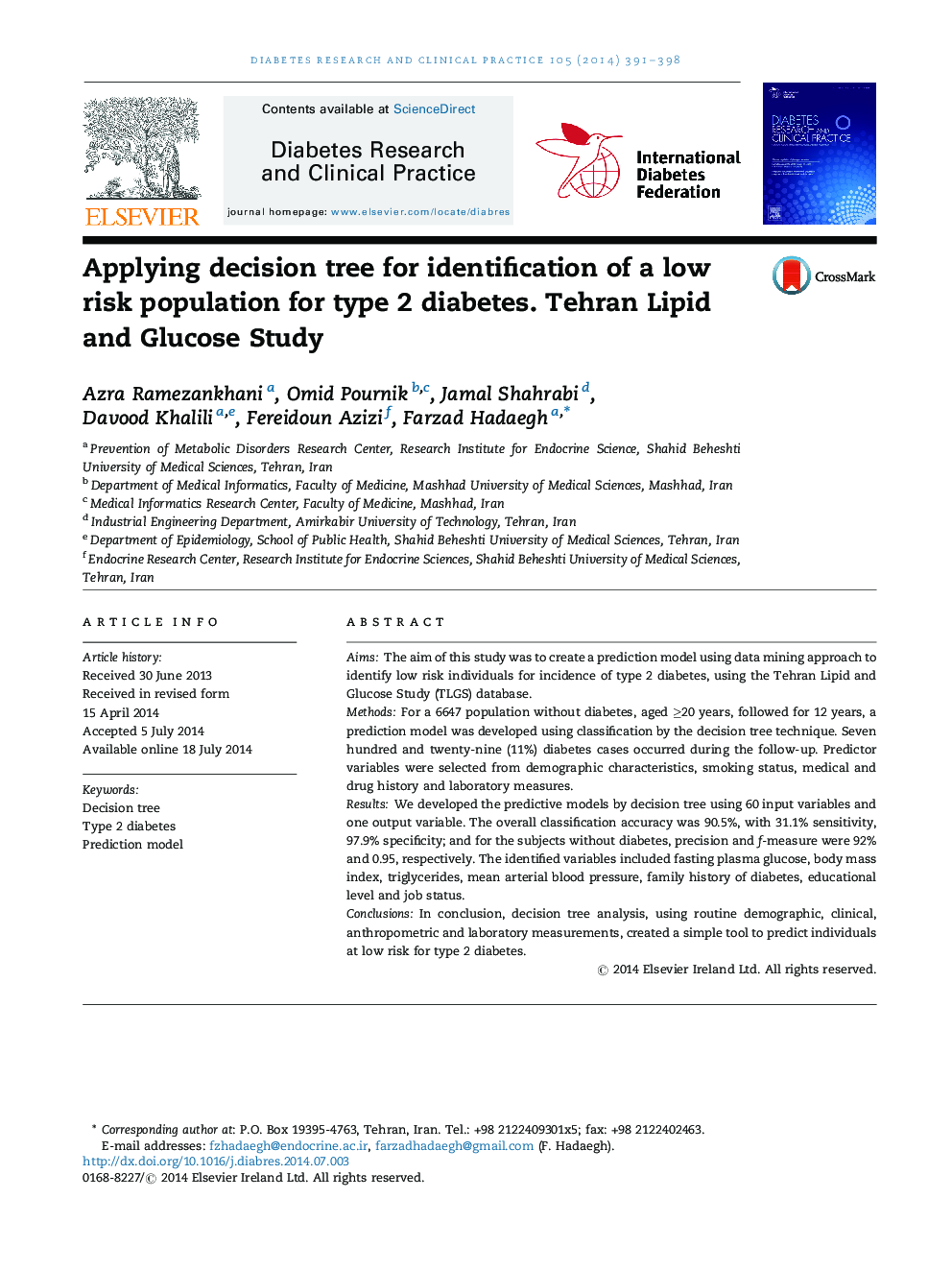| Article ID | Journal | Published Year | Pages | File Type |
|---|---|---|---|---|
| 5899528 | Diabetes Research and Clinical Practice | 2014 | 8 Pages |
AimsThe aim of this study was to create a prediction model using data mining approach to identify low risk individuals for incidence of type 2 diabetes, using the Tehran Lipid and Glucose Study (TLGS) database.MethodsFor a 6647 population without diabetes, aged â¥20 years, followed for 12 years, a prediction model was developed using classification by the decision tree technique. Seven hundred and twenty-nine (11%) diabetes cases occurred during the follow-up. Predictor variables were selected from demographic characteristics, smoking status, medical and drug history and laboratory measures.ResultsWe developed the predictive models by decision tree using 60 input variables and one output variable. The overall classification accuracy was 90.5%, with 31.1% sensitivity, 97.9% specificity; and for the subjects without diabetes, precision and f-measure were 92% and 0.95, respectively. The identified variables included fasting plasma glucose, body mass index, triglycerides, mean arterial blood pressure, family history of diabetes, educational level and job status.ConclusionsIn conclusion, decision tree analysis, using routine demographic, clinical, anthropometric and laboratory measurements, created a simple tool to predict individuals at low risk for type 2 diabetes.
